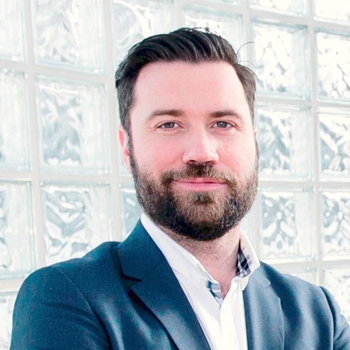Transitioning to the Endemic: Challenges facing C-Suite executive visibility
The end is in sight. Depending where you are in the world, despite new coronavirus variants and fresh outbreaks, the COVID-19 endemic is either in transition or on its way. Clients and colleagues alike have been waiting with bated breath for a guaranteed return to face-to-face interactions, business travel, real-life interviews and making meaningful connections at post-event dinners and receptions.
With that said, we’re creatures of habit – and our largely virtual executive comms routine has become our norm.
Here are five challenges in C-suite healthcare executive visibility we are facing right now.
- Media relationships: Those face-to-face interactions with reporters that happen by chance at a conference, which aren’t formally set up, can often end up leading to the most valuable connections and lasting relationships. You just don’t have the same encounters in a virtual setting, which leads to the knock-on effect of a lack of growth of relations on the client’s side. PR practitioners run successful virtual media roundtables, which work very well – but the added value of showing up in-person and having reporters outside of your usual pool hear you speak onstage, is priceless.
- Wider stakeholder groups: A 2021 Executive Influence study [i]found that nearly three quarters (74%) of executives believe that shareholders are no longer the single most important stakeholders. This has a knock-on effect on the subject matter executives should be speaking to, with 77% of leaders saying it’s hard to balance the need to address societal issues with the need to make a profit. With audience pools having potential to be huge at virtual events, it’s more difficult to target your really invested and interested stakeholders in a world of often complimentary event registration.
- Increasing prevalence of sponsorship: Highly sought-after earned opportunities are becoming even more competitive in the event space, particularly now with the push to get external engagement back to in-person. Anecdotally, we’ve heard of some outlets offering earned speaking slots to larger pharma companies and requesting less well-known startups or indigenous healthcare companies to opt for sponsored slots, giving top execs at smaller companies an immediate disadvantage.
- Authentic thought leadership: FleishmanHillard’s 2021 Authenticity Gap revealed that consumers are looking to leaders to take an authentic stand on key policies and issues like the environment and public health. While this may be outside of the realm of what our C-suite is typically used to speaking to, the data shows just how important this is to appeal to the all-important wider stakeholder pool we mentioned in point 2. Two-thirds (65%) of informed consumers expect CEOs to speak up on issues that have a significant impact on society, even if it may not impact their business, with three-in-four consumers (73%) believing CEOs must have an active voice on supporting and influencing environmental issues and policy change. Sixty-five percent of consumers say CEOs should play a role influencing health policy.
- Virtual fatigue: Need we say more? While it’s logistically less of a lift for executives to agree to a 30-minute pre-recorded keynote speech, audiences and journalists travelling to and attending top tier conferences in-person will soon expect to see speakers in real life, on the podium. Many conferences are accommodating a virtual element in the shift back to in-person events, but as travel restrictions ease, landmark conferences will be more insistent on their speakers showing up in the flesh.
We’re navigating through plenty of uncertainty at the moment, not least the safety of our clients and colleagues affected by the devastating Russian invasion of Ukraine and other tragic global events.
Presently, our C-suite clients can speak or show support virtually from anywhere in the world, at any time. As with transitioning back to working from the office, a shift to showing up to engage in-person will not be without its challenges and will take some getting used to. Ultimately though, as we’ve all experienced in the past two years; nothing beats hearing, seeing and experiencing human engagement in real time, in-person.
Find Out More
-
Purpose-led work takes 2020 eurobest Grand Prix
January 18, 2021


